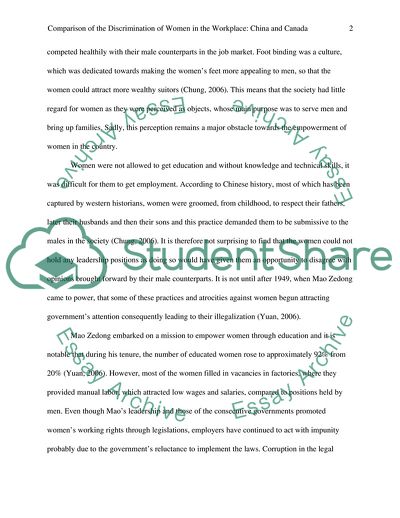Cite this document
(Comparison of the Discrimination of Women in the Workplace: China and Canada Literature review Example | Topics and Well Written Essays - 1750 words, n.d.)
Comparison of the Discrimination of Women in the Workplace: China and Canada Literature review Example | Topics and Well Written Essays - 1750 words. https://studentshare.org/gender-sexual-studies/1769429-a-comparison-of-the-discrimination-of-women-in-the-workplace-china-and-canada
Comparison of the Discrimination of Women in the Workplace: China and Canada Literature review Example | Topics and Well Written Essays - 1750 words. https://studentshare.org/gender-sexual-studies/1769429-a-comparison-of-the-discrimination-of-women-in-the-workplace-china-and-canada
(Comparison of the Discrimination of Women in the Workplace: China and Canada Literature Review Example | Topics and Well Written Essays - 1750 Words)
Comparison of the Discrimination of Women in the Workplace: China and Canada Literature Review Example | Topics and Well Written Essays - 1750 Words. https://studentshare.org/gender-sexual-studies/1769429-a-comparison-of-the-discrimination-of-women-in-the-workplace-china-and-canada.
Comparison of the Discrimination of Women in the Workplace: China and Canada Literature Review Example | Topics and Well Written Essays - 1750 Words. https://studentshare.org/gender-sexual-studies/1769429-a-comparison-of-the-discrimination-of-women-in-the-workplace-china-and-canada.
“Comparison of the Discrimination of Women in the Workplace: China and Canada Literature Review Example | Topics and Well Written Essays - 1750 Words”. https://studentshare.org/gender-sexual-studies/1769429-a-comparison-of-the-discrimination-of-women-in-the-workplace-china-and-canada.


